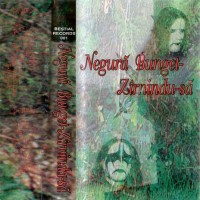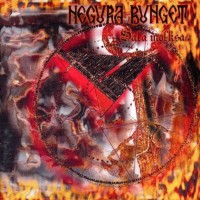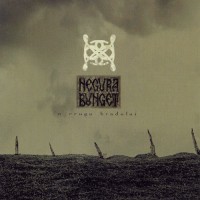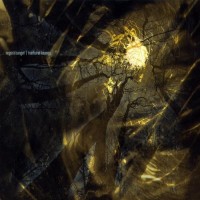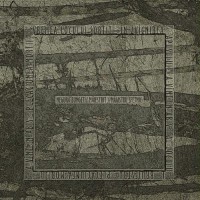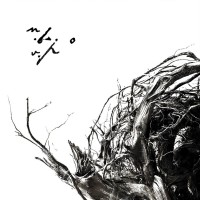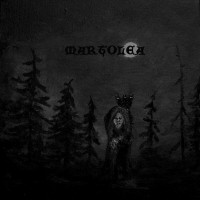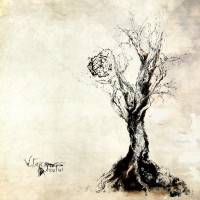Getting Into: Negură Bunget (1995-2010)

| Written by: | RaduP |
| Published: | November 21, 2021 |
Click here for PART II
When I started writing Getting Into articles, I started writing for some of my favorite bands which were missing one, each of them being bands with enormous significance to me in developing my taste in my formative years. Some of those I also discovered thanks to Metal Storm. But Negură Bunget has an additional reason to be very very significant for me. They’re from my country. Well, not only that, they’re from the city where I went to college, and their music is themed around the landscapes and traditions of the region of the country that I live in. Needless to say, Negură Bunget is an extremely personal band for me. Even before I started writing my first article, I knew I would eventually write one for Negură Bunget. It was just a matter of building courage and finding the right time. And what a better time than for it to coincide with the band’s final album.

Negură Bunget’s history is pretty divisive in its lineup changes. Initially formed as Wiccan Rede in 1994 before morphing into Negură Bunget as a duo of Negru and Huppogramos. Sol Faur then joined the ranks in 1998 to create the “classic” trio that would release the “classic” albums. This lineup would dissolve in 2009 and Huppogramos and Sol Faur would go on to form Dordeduh, while Negru would recruit a new lineup to continue the Negură Bunget name. That lineup would implode a bunch of times too, but would reach a pretty stable form in 2013. Negru would embark on creating a “Transylvanian Trilogy” and release two of those with said lineup before passing away in 2017. The remaining lineup recorded the final album in the trilogy based on demos left over.
It’s easy to see why a band whose only founding member left being its drummer would stir up some controversy, and the lukewarm reception of the post-2009 albums might not have to do simply with “this is not the real Negură Bunget”. But it would be wrong to dismiss any part of the band’s discography, nor the post-break-up ones, nor the early Scandinavian scene worship ones. So, here I would attempt to go through the entire collected works, from the beginnings as Wiccan Rede, to the swansong Zău. And in the meantime touch on side-projects, bands spawned from it, bands of prominent members, and so on. But with varying degrees of depth, thus some of them might only have one album featured.
Picking a splitting point for the articles was a bit tough. The breakup happened in 2009, but there were two records with the original lineup released after that, even if both continuation bands released material in 2010. Picking either 2009 or 2011 would ruin the balance of number of write-ups in each article, so I went with 2010. That leaves post-breakup material in the first article, and pre-breakup material in the second article. It is what it is.
And before we embark, Negură Bunget means “dark foggy forest” and the two words come from the thracian substrate of the Romanian language, the oldest one. Most of their lyrics are in an archaic form of the language, often hard even for me to properly translate. But all of it written in the Latin alphabet, completed with a few Romanian specific characters like “ă”, “î”, “ș”, and “ț”. You’ll find a bunch of cases where information online does not have those characters properly in place, and don’t even get me started on what a mess their Spotify is. Wrong release dates, missing characters, typos, and even cases where there are some special characters, but not others. Ugh.
In any case, let us embark!

1995 - Wiccan Rede - From Transilvanian Forest


Negură Bunget didn’t actually start out as Negură Bunget, and in their primordial phase they were formed under the name Wiccan Rede back around 1994. You can easily tell from the pseudonyms that these guys took (“Black Pharmakeya Pepóromenée” for example) that they were going for that evil esoteric vampyric vibe. Granted, at least they would be one of the first bands to go for a Transylvanian vibe while actually being from Transylvania, so there is some historical merit to this record other than this being a proto-Negură Bunget. But I doubt this would get any amount of attention today if this didn’t have the same two musicians who would go on to record OM ten years later. Here Negru and Hupogrammos are joined by Aiwazz Vallach Disciple on keyboards, who either stopped making music after Wiccan Rede morphed into Negură Bunget or completely abandoned the pseudonym. This is a pretty straight-forward symphonic black metal release that does contain some pretty cool riffs, melodies, and shrieks, but in a form so undercooked and primitive and lacking something to set it apart in any positive way from the Norwegian scene it is clearly trying to emulate. This did get remastered and re-released in 2000, along with two new rehearsal tracks recorded with a different lineup, and the remaster does make this sound more worthwhile, even if I reckon some would prefer the rawness of the original. And ironically the remastered tracks sound better than the rehearsal tracks recorded much later. This would eventually bear the Negură Bunget name in a 2008 re-release, which is probably the version that you’re gonna find.
With the band changing its name from Wiccan Rede to Negură Bunget and Aiwazz’ departure, Negură Bunget was down to two members: Negru doing drums and Hupogrammos doing everything else. This also came with the ditching of the vampyric themes for something more inspired by Transylvania’s nature, a theme that would be consistently present in Negură Bunget’s music, and thus their music would try to channel a certain atmosphere. The symphonic aspect of the debut is shifted slightly, and while keyboards are still being used quite heavily, it’s not quite to the level of omnipresence. The biggest qualm is that the keyboard melodies are mixed significantly higher and they’re not specifically interesting, at least not compared to the guitar and drum playing, which have clearly improved in the meantime. Some clean vocals do make their debut, but they’re such an awkward far cry to how well they would be used later on. The music is still clearly trying to play catch up with the Scandinavian scene, but there’s some slight progressive tendencies in some of the melodies that begin to set the band apart. As a whole the album sounds rushed and formulaic, but presents some more potential. And the remixed version that came in 2004 tackled a bit of the mixing issues with the keyboards, and most of the time the two versions come together, so one can be free to compare.
Makrothumia could seem like a Negură Bunget side-project, since both Gabriel Mafa and Edmond Karban were in the band, but Makrothumia is just as old and the two bands existed concurrently in the 90s. The two are joined by three other musicians, one of which being Gabriel Karban, Edmond’s brother, who would also perform live keys and bass for both Negură Bunget and Dordeduh. Progressive doom metal is a pretty underrated genre fusion, especially if the doom metal component is closer to death doom. And even though there were some bands like Pan.thy.monium, Madder Mortem, Babylon Sad, and Phlebotomized doing something along that genre fusion at that time, Makrothumia’s The Rit Of Individualization still feels pretty unique. Though 1995’s Four Stories About… Nothing demo was notable for the presence of the violin, that one was still mostly focused on a pretty gothic take on death doom. It was The Rit Of Individualization where the songwriting took an even more progressive route. If you asked me in 1997 which band out of the two would make it big, I wouldn’t understand your question, because I was just born, but otherwise, it would probably have been this one. Though the production is as raw as you can expect, the songwriting and performances are great all around. The band was revived with a new lineup in 2013, had a couple of concerts (one of which I attended), before changing the name to Transceatla. Sadly, as of the writing of this article, the band has not released any music under that name.
“Sala Molksa is the place where Dacian knights went after death, the heaven of mighty and brave warriors.” In some ways this is a pretty watershed release. It is the first one to see Negură Bunget in its classic trio lineup, with Sol Faur joining the band, sharing Hupogrammos’ guitarly duties. But also it is the first Negură Bunget release to include some folk sensibilities, mostly in the form of some wind instruments. Though the latter is only a small change that would act more like a seed towards their development on later albums, the former shapes Sala Molksa into a more riveting release. The keyboards are used even more sparingly, with the bulk of the album concentrating more on a flurry of guitar riffs and blasts. The playing does feel a bit more sloppy because it feels like the band bit a bit more than they could chew at this point, but they were clearly willing to not live in the shadows of the Scandinavian scene any more. This is the sound of an ambitious band, but one that isn’t yet able to tackle its sound. But the choirs, complex structures, atmospheric emphasis, they’re all there, but in a form more feral. Though it is only an EP, its 27 minutes runtime makes it feel pretty complete. Like most early Negură Bunget work, it would eventually be re-released with a remixed version alongside.
Though Sala Molka debuted the classic lineup, the folk tendencies, and had a bunch of moments that feel like classic Negură Bunget, Măiastru Sfetnic pushes even further into dark atmospheres. Less feral than the previous EP, but still as feral, while continuing to develop its own unique sound. There are still bits that feel a bit awkward, which is mostly emphasized by the mixing which makes the keyboards overly loud and the vocals feel more like part of the ambiance, and the blasting sounds pretty weird as well. But there’s plenty of moments that feel enhanced by the raw production to add a feral charm. Since the band’s aim was to recreate the feeling of a dark foggy forest, I’d say it captures that atmosphere pretty well. The ambiance created can often go into spooky detours, which could have sounded incredibly cheesy in the wrong hands. Most of the songs are around ten minutes in runtime, but the band is already capable of filling that runtime with pace changes, a huge sense of dark atmosphere, integrating their past symphonic black metal tendencies with the harsher sounds and some folk embellishments. And the few clean vocal moments no longer sound awkward. Their ambition hasn’t paid off yet, but at this point it was already clear that Negură Bunget really had something to offer. Hence why while most early Negură Bunget work was remixed, this one was re-recorded completely for 2010’s Măiastrit, because the songs were too good to dwell in this state.
Up until this point, I’ve talked about how every release was building towards the Negură Bunget sound bit by bit. Well, this one is it. No longer plagued by being too ambitious for its own good nor by amateurish production choices, ‘n Crugu Bradului takes Măiastru Sfetnic’s knack for long complex songs, and dark atmospheres and turns it to 11. Themed around the universal cyclic nature of the number 4, the album is separated in four long tracks. It still feels pretty impenetrable at first, with the songs seeming too long and incohesively sequenced, but the production and the shorter runtime makes this one easier to turn into a grower as much as it requires patience for it. To the point where my contrarian ass once considered this better than OM. Even if the folk aspects are a bit more prominent, they still take a backseat to the ferocious atmosphere and the spooky keys. So it is an improvement in pretty much every field compared to its predecessor, with the progressive and atonal songwriting being both more fit for the long-form songs, more clearly audible, and better performed. Thus, their ambition has paid off. But ‘n Crugu Bradului lacks something to make it truly monumental, and I can see where the “disjointed” criticism comes from. And yet, every time I listen to it, I love it a bit more.
There are two things that are worth noting about this EP. First, this is sort of an early version of OM, at least partly. So in case you’re listening to this after listening to OM, a bunch of parts will already feel familiar, even if they would be expanded into something better later on. But in the state that they are, they’re clearly already very good. This one got included as a bonus disc on OM’s 10th anniversary re-release too. Secondly, it is incredibly weird to hear Negură Bunget singing in English. Inarborat Kosmos is composed of four tracks, two metal ones, and two ambient ones, each intertwined, creating a very fulfilling dynamic despite the relatively short 20 minutes runtime. Though it is sort of an OM teaser, it would be wrong to dismiss Inarborat Kosmos, not only because there’s original material here, but because it’s a neatly packaged bit of what makes Negură Bunget great.
If you read our old rating abuse guide, you’ll notice the following: “Metal Storm has a set ranking system. A nice, easy ten digit scale. 1 is Lulu. 6 is average. 7 is good. 9 is excellent. 10 is OM, etc.”, and even though I encourage you to follow that ranking system, I find it really telling how OM can be seen as a staple of what a 10/10 metal album is. Trying to describe what makes OM such a monumental achievement is a daunting task, because it’s so hard to do it justice, especially since I don’t want its write-up to be that significantly longer than anything else. But also because, as a Romanian, this is the reason why Romanian metal even gets brought up in discussion in outside circles instead of being our own national circlejerk. Though I still think it’s only the second best Romanian album, there hasn’t really been anything close to being as revelatory. Though the secret to both bands was progressive songwriting in a newer genre combined with a dash of originality through the infusion of Romanian folk music. The folk influences have been part of Negură Bunget’s music for a while, but they get a massive contribution here, partly because Alin Drimuș of Marțolea is also contributing with some folk instruments. The production makes the music less ferocious, but more ethereal, with the progressive songwriting even more pronounced. The bass, performed by live bassist Ermit, feels even more punchy than it did on 'n Crugu Bradului. The clean vocals finally lose all traces of awkwardness, and there’s no better testament to the percussive abilities of Negru than the cinematic instrumental “Norilor”. What has previously sounded spooky now sounds downright ominous. The guitar melodies in “Ţesarul de lumini” are absolutely otherworldly, and that’s probably my favorite song of theirs. This is an album that is on such a high scale that it's hard to put into words without me blabbing incomprehensive praise. There’s no metaphor that even comes close to how this makes me feel.
Re-recorded albums are very rarely that well received. Especially in black metal, where you have Dimmu Borgir and Gorgoroth attempts that are pretty lukewarm. To my knowledge, Măiestrit, is probably the only case of a black metal re-recording that I feel improves the original, and even here I’m not completely certain. This is the last release made by the original lineup, released while the band had already broken apart, so something tells me that the production would’ve been handled with even more care if the band was fully around to oversee it. For two albums of pretty much the same songs, Măiastru Sfetnic and Măiestrit still manage to sound pretty distinct, with some of the music being re-imagined rather than merely re-recorded, so in a way this re-recording completents rather than replaces the original. The production is obviously more clear, making the music feel less feral but more meaty. The mood feels more in line with a certain elegance of the previous Negură Bunget material, just with a more black metal and less folk feel. The therimin in “În-Zvîcnirea Apusului” and the clean vocal intro turning to shrieks of “Al Locului” feel even more potent. The runtime of the songs feels even more justified this time around, and that even goes for the two acoustic versions of songs, which do remind me a lot of what would eventually happen in Sunset In The 12th House.
Negură Bunget’s original trio lineup dissolved in 2009, with Hupogrammos and Sol Faur leaving to form Dordeduh, while Negru kept Negură Bunget active recruiting some of the live musicians, as well as some new musicians. Inia Dinia and Ageru Pământului, both of Argus Megere, were already live members from as far back as 2003, while Gădineț was part of Negru’s Din Brad side project. Joining these two are Corb and Spin. For a lot of people, this and the following incarnations of the band are no longer really Negură Bunget, only having one original member in their ranks, which is a sentiment I can understand, but the post-breakup material should not be dismissed. The music on Vîrstele Pămîntului clearly tries to reconstruct the success OM, with the folk and ambient parts having a massive share of the sound, perhaps even more so. The transition from one lineup to the next in terms of the sound seems pretty smooth in terms of those sections especially. It is the more black metal bits that feel more different, especially because both vocalists on this record (Spin and Ageru) offer their first recorded contributions to the band, so the difference is starker than the folk/keys parts, especially in the clean vocals sections. And in between the two comes the riffing, which is also distinct, not necessarily in a bad way. The build up in “Pămînt” as it gets darker and darker until exploding into black metal, the massive tulnic intros of “Țara de dincolo de negură” and “Întoarcerea amurgului”, and the dark new age ambiance of “Jar”, all of these instantly became highlights, even when compared to the band’s classic material. However I can’t shake the feeling that the band were trying, even as successfully as it sounds here, to reverse engineer what really worked with OM.
A band with a marginal connection to Negură Bunget is Marțolea, who is the one man band of one Alin Drimus. Alin is mostly a wizard of the folk wind instruments, having performed various flutes and the like on Negură Bunget’s OM, as well as during live performances, and on Dordeduh’s Dar De Duh. So in a way, his playing is integral in what makes OM such a masterpiece, and Noaptea Dihăniilor is mostly centered around them. He is handling every other instrument, and even though it is clear what he excels at, the guitar playing and the vocals are more than decent enough to showcase his own take on the folk black metal sound. Both his and Negură Bunget’s takes are transcendental, but whereas Negură Bunget feels like an ethereal foggy forest, Marțolea is about the creatures of the night, of strigoi and varcolaci, of things very weary of trespassers. Noaptea Dihăniilor has a very unique vibe that makes up for the relatively bland songwriting. This was preceded by the shorter Gâlmele Întunericului demo, and the two actually flow quite well one into another, so one could listen to the two in sequence as if it were one big hour-long album. I’d be more critical of the repetitive nature of this if this wasn’t this unique. And it’s not unique just because no other band sounds like this, but also because there’s no other Marțolea album to compare.
After the dissolution of Negură Bunget’s original lineup in 2009, Huppogramos and Sol Faur went on to form Dordeduh, and in the same year that Negură Bunget’s new lineup released Vîrstele Pămîntului, Dordeduh also wasted no time in giving us a sample of where they would take the sound next. Joined by Flavius Misarăș on bass and Sergio Ponti on drums, the sound they would forge here is a continuation of the OM sound, with a huge emphasis on folk instrumentation and ambiance, yet already sowing the seeds of an even more progressive approach. That would become even more apparent when the band would cover Enslaved’s “Ruun” for a tribute album, and that cover would be appended to this EP in later versions. The two songs here would eventually find their way in an even more expanded form on the band’s debut full-length, with “Zuh” especially growing from 6 to 14 minutes, thus the final version of “Zuh” would be longer than this entire EP. This should tell you that Valea Omului feels more like a teaser, and I can expect people in 2010 were properly teased. But once you’ve heard the final versions of these songs, Valea Omului is more of a curiosity, a fantastic EP of early versions. Though at this point it wasn’t clear who would emerge as the most successful of OM’s continuations, I’d say this EP tipped the scales slightly in Dordeduh’s favor.
And here is where we left of, after a messy break-up that spawned a completely new lineup for the band, and an offshoot in Dordeduh. This article does spawn a bigger timespan, and a massive evolution in sound, compared to what will follow in Part II, but stick around for that.
 | Written on 21.11.2021 by Doesn't matter that much to me if you agree with me, as long as you checked the album out. |
Comments
| Dinruth Posts: 452 |
| RaduP CertifiedHipster Staff |
| Dinruth Posts: 452 |
| RaduP CertifiedHipster Staff |
| Bad English Tage Westerlund |
| Karlabos |
| Bad English Tage Westerlund |
| RaduP CertifiedHipster Staff |
| RaduP CertifiedHipster Staff |
| Bad English Tage Westerlund |
| nikarg Staff |
| Alakazam spendin' cheese |
| Darkside Momo Retired Elite |
| RaduP CertifiedHipster Staff |
| nikarg Staff |
| Alakazam spendin' cheese |
| RaduP CertifiedHipster Staff |
| Alakazam spendin' cheese |
| Valentin B Iconoclast |
| Deadsoulman Elite |
| Bad English Tage Westerlund |
| Bad English Tage Westerlund |
| RaduP CertifiedHipster Staff |
| Deadsoulman Elite |
| Darkside Momo Retired Elite |
| Deadsoulman Elite |
| BitterCOld The Ancient One Admin |
| DarkWingedSoul |
| DimitrisKupris Posts: 53 |
Hits total: 4439 | This month: 96



